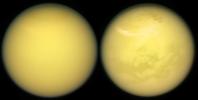The Discovery of Titan: Christiaan Huygens and the Unveiling of Saturn’s Largest Moon
The year 1655 marked a monumental leap in the field of astronomy when Dutch mathematician, physicist, and astronomer Christiaan Huygens discovered Titan, the largest moon of Saturn. This discovery was not merely an isolated event but rather the culmination of centuries of astronomical observation, technological advancement, and intellectual curiosity. Huygens’ identification of Titan expanded humanity’s understanding of the solar system, reinforcing the idea that other planets had their own satellites, much like Earth’s Moon.

The Early Observations of Saturn
Before Huygens’ discovery, Saturn had long been a subject of fascination for astronomers. Galileo Galilei, using his early telescope in 1610, was the first to observe Saturn’s peculiar appearance. However, the limitations of his instrument prevented him from clearly discerning the planet’s rings. Instead, Galileo noted strange, ear-like appendages on either side of Saturn, which he mistakenly interpreted as two large moons or perhaps a triple-bodied planet. Over the next few decades, astronomers struggled to make sense of Saturn’s changing appearance as the angle of its rings shifted relative to Earth.
It wasn’t until the mid-17th century that advancements in telescope technology allowed for more detailed observations. Christiaan Huygens, born in 1629 into a prominent Dutch family, was a brilliant polymath who had already made significant contributions to mathematics and optics. Alongside his brother Constantijn, Huygens worked on improving telescope design, ultimately crafting lenses with superior clarity and magnification. These innovations were crucial in enabling him to detect Saturn’s largest moon.
Huygens’ Discovery of Titan
On March 25, 1655, Huygens observed a small, starlike object near Saturn. Over several nights, he tracked its movement and confirmed that it was indeed a satellite orbiting the planet. This moon, later named Titan, was the first natural satellite discovered around Saturn and the fifth moon ever identified in the solar system after Jupiter’s four Galilean moons (Io, Europa, Ganymede, and Callisto).
Huygens announced his discovery in his 1656 work De Saturni Luna Observatio Nova ("A New Observation of Saturn’s Moon"). However, cautious of premature claims—a lesson learned from Galileo’s misinterpretation of Saturn’s rings—he initially concealed his findings in an anagram: "aaaaaaacccccdeeeeeghiiiiiiillllmmnnnnnnnnnooooppqrrstttttuuuuu." When decoded, this anagram read: Annulo cingitur, tenui, plano, nusquam coherente, ad eclipticam inclinato ("[Saturn] is surrounded by a thin, flat ring, nowhere touching, inclined to the ecliptic"). This not only confirmed the existence of Titan but also correctly described Saturn’s ring system, which Huygens had deduced from his observations.
The Naming of Titan
Initially, Huygens referred to the moon simply as "Luna Saturni" ("Saturn’s moon"). The name Titan was proposed much later, in 1847, by English astronomer John Herschel (son of William Herschel, who discovered Uranus). Herschel suggested naming Saturn’s moons after the Titans of Greek mythology—the siblings of Cronus (the Greek equivalent of Saturn). Titan, the largest of Saturn’s moons, was aptly named after the Titans themselves, beings of immense size and power.
The Significance of the Discovery
Huygens’ discovery of Titan was groundbreaking for several reasons:
Reinforcement of the Copernican Model: The discovery supported the Copernican model of the solar system, which posited that Earth was not the center of the universe. The fact that other planets had moons suggested that celestial bodies could have their own orbiting systems, much like Earth.
Advancement of Telescopic Innovation: Huygens’ ability to discern Titan was a direct result of his improvements in lens grinding and telescope design, setting a precedent for future astronomical discoveries.
Expansion of the Known Solar System: At the time, only five other moons were known (Earth’s Moon and Jupiter’s four Galilean moons). The identification of Titan suggested that other planets might also host undiscovered satellites, opening new avenues for exploration.
Later Observations and Exploration
For centuries after its discovery, Titan remained a mysterious dot in the sky. Its dense, nitrogen-rich atmosphere—discovered in 1944 by Gerard Kuiper—made it unique among moons in the solar system. Unlike other satellites, Titan’s thick haze prevented direct observation of its surface, leaving scientists to speculate about its composition and potential for organic chemistry.
The true nature of Titan was unveiled only in the space age. NASA’s Voyager 1 flyby in 1980 provided the first close-up images, revealing an atmosphere thicker than Earth’s and surface features obscured by an orange haze. However, the most groundbreaking exploration came with the Cassini-Huygens mission (a joint project by NASA, ESA, and ASI). Launched in 1997, the spacecraft arrived at Saturn in 2004, with the Huygens probe (named in honor of Christiaan Huygens) descending through Titan’s atmosphere in January 2005. The probe transmitted stunning images of river valleys, lakes, and dunes made of hydrocarbons—confirming Titan as a world with active weather cycles, albeit with liquid methane and ethane instead of water.
Legacy of Huygens’ Discovery
Christiaan Huygens’ identification of Titan was more than just an astronomical milestone; it was a testament to human curiosity and ingenuity. His work laid the foundation for future discoveries, influencing generations of astronomers. Today, Titan is regarded as one of the most intriguing bodies in the solar system, with potential astrobiological significance due to its complex organic chemistry.
From a faint point of light in Huygens’ telescope to a world of methane lakes and icy plains, Titan’s story is a remarkable journey of scientific progress. Huygens’ discovery in 1655 was just the beginning—a first glimpse into the vast and mysterious system of Saturn, which continues to captivate scientists and space enthusiasts alike.
Photo from NASA(.gov)
0 Comment to "The Discovery of Titan: Christiaan Huygens and the Unveiling of Saturn’s Largest Moon"
Post a Comment